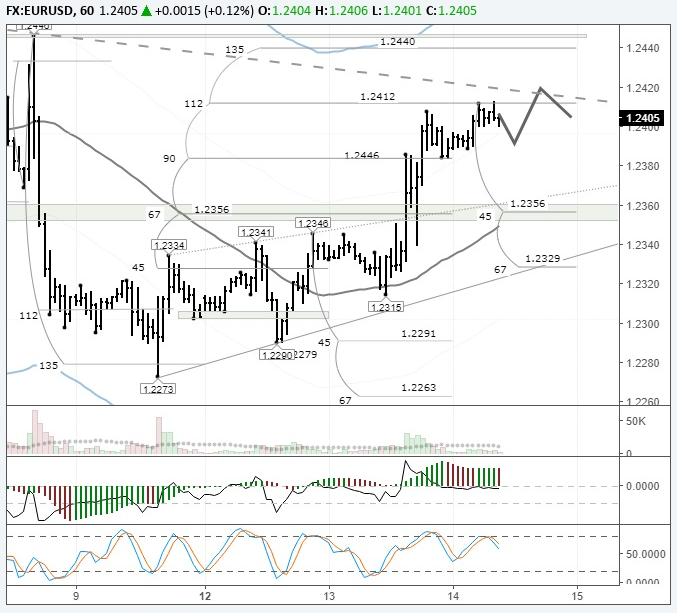Previous:
On Tuesday the 13th of March, trading on the EUR/USD pair closed up. The single currency made gains of 0.47% against the greenback to reach 1.2389. Volatility was high during the US session. This surge in volatility was down to both US inflation data and news that Donald Trump fired Rex Tillerson from the post of Secretary of State.
It has already been announced that Tillerson will be replaced by CIA head Pompeo. This reshuffle at the top level of government heaped pressure on the dollar and stock markets. US10Y bond yields have dropped from 2.88 to 2.8330%.
CPI data confirmed the consensus, although prices didn’t grow as much as they did in January. These figures lower the probability of the Fed raising interest rates 4 times this year.
The consumer price index for February posted 0.2% growth MoM and 1.8% YoY (forecast: 0.2% MoM, 1.8% YoY, previous: 0.5% MoM, 1.8% YoY). The month on month value is significantly lower than that of the previous month.
Day’s news (GMT+3):

Fig 1. EURUSD hourly chart. Source: TradingView
Yesterday’s target was reached. Buyers met with resistance at the 90th degree, from where a rebound to around 1.2340 occurred. Trading closed around the 112th degree.
The euro’s rise was brought about by Trump’s decision to sack Rex Tillerson. Since Trump immediately nominated Pompeo to the post, markets have already factored this news in and it shouldn’t have any more of an effect. According to my pricing model from the 8th of March, the pair could easily return to 1.2446. However, in order for this to happen, buyers need to cross the trend line at around 1.2450.













Leave A Comment